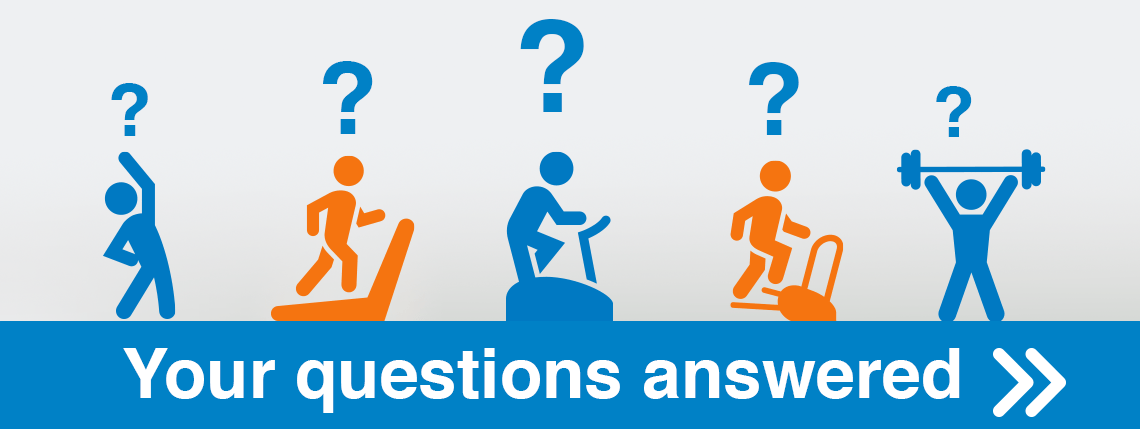Right now, we are in a very uncertain and stressful time for our industry. We have therefore created our new regular feature, Ask FitPro. We want to tackle the topics most important to you and bring clarity through the confusion. We want this to be a welcoming space where you can send us any questions you may have, as we are sure many people will be thinking the same.
Since the last Ask FitPro, we have had a number of people asking for advice around how they can support and train vulnerable clients. So, we reached out to some of the course authors from our Movement is Medicine course tile to share their insights and advice on the topic.
Author of Cancer and Exercise – the Basics, Marion Foreman had this to say:
“Many people who are living with cancer are self-isolating at the moment – they may have been told to or may have made that choice themselves. Many people with cancer are having or have had treatments which may have affected their immune systems and therefore they are more likely to catch diseases such as flu and COVID.
“This, of course, means that we are unable to offer them their usual PT sessions in person. Combined with the gyms being forced to close, this means that many of our clients are not able to access the face-to-face support and help we normally offer.
“I have shifted all my one-to-one sessions to online and my cancer exercise classes are on Zoom now. I do assessments in the same way and, with practice, have become skilled at demonstrating by webcam and watching and correcting form ‘virtually’. And as for supporting and helping, we have found ways – we chat as we always have and we laugh and cry the same as ever. For me, the key has been for me to be confident and make sure the technology works. The rest is what good PTs do all the time – ask the right questions, make the right moves and watch form like a hawk. Oh – and don’t forget to check with your insurers!”
Author of Parkinson’s Pro, Tim Webster had this to say:
“The four primary signs of Parkinson’s are bradykinesia (smallness), tremor, rigidity and postural instability (compromised balance). The two areas the exercise professional can have the biggest impact on are bradykinesia and balance. Common signs of bradykinesia are a shortening of stride, foot drop and an abbreviated arm swing on one side, so finding a space where the person with Parkinson’s (PwP) can practise long strides with a good heel strike and a positive arm swing, while you watch and coach on Zoom, can be very effective. And teaching your client to be aware of taking small strides during their activities of daily living (ADLs) and to consciously self-correct is a hugely valuable life skill for them. Impaired balance affects most PwP, so anything and everything you can do to help with balance is also extremely helpful. There are lots of balance exercises, supported and unsupported, you can teach and monitor over Zoom.”
Author of Sciatica: Symptom or Condition? Training for the Fitness Professional, Cherry Baker had this to say:
“Well, these are strange days! We, as an industry, I feel have risen to the challenge.”
“One of the challenges we face is how to deal with new people; an even bigger challenge would be how to deal with new people with specific conditions.”
“I specialise in working with clients recovering from back pain. Often, back conditions may cause sciatica. It is a situation I have found myself in – have you? It is important we realise sciatica is a symptom, not a condition.”
“In my opinion, somebody with sciatic symptoms who wishes to start an exercise programme should be seen by a medical professional to ensure they are fit to attend and it’s preferable that they attend with some sort of a diagnosis for you to know what type of approach to take. However, we all know how difficult it is to get appointments. The physio I work with is busier than ever!”
“The main thing is to know the RED flags to be aware of when working with clients who have sciatica before you take on any clients and to always work in a symptom-free range. It’s worth noting that short-term, more acute sciatica commonly increases anxiety and long-term, more chronic (remember chronic does not mean worse) sciatica often leads to depression, so we are not only dealing with ‘normal’ perception of pain or discomfort.”
In previous Ask FitPro, we have explored a range of areas, such as how to train clients who are still recovering from COVID-19 and questions around government announcements.
You can find responses to these questions HERE.
Where to next? find out how the fitness community have found their passion and purpose in this pandemic







